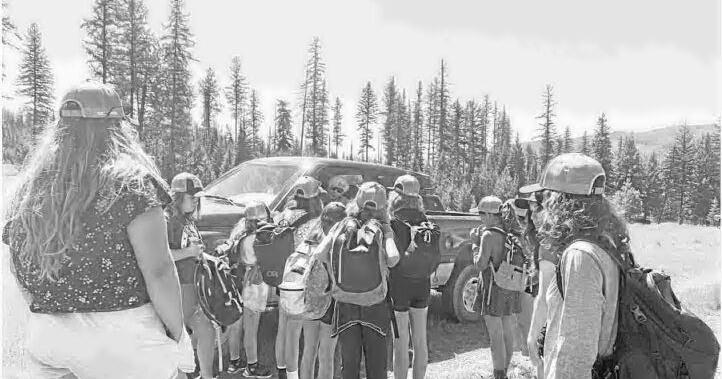A proponent of conservation and education, 92-year-old Betty Thisted is an advocate for the importance of both.
The former Frenchtown high school biology teacher owns 622 acres in the Ninemile Valley and Lolo National Forest area. The land is covered by several conservation easements and has been in the Thisted family since 1938.
“Well, I’m a teacher. You never quit teaching,” Thisted said during a recent school field trip at her property. “So what I want to do is use all of this land that I own. It’s not huge, but it’s significant for its own purposes.”
Over the years, the land has become a field trip area for students of all ages to explore and learn more about the importance of conservation and agriculture in the valley.
The newest group to explore the area was a group of sixth to eighth graders participating in the STEEM Collaborative program through the Montana Natural History Center. The group of middle schoolers took a bus up to the area on June 20.
People are also reading…
The summer program is open to students interested in science, technology, engineering, economics and mathematics. Recognizing that women and non-binary individuals are underrepresented in STEM, the goal of the program is to challenge stereotypes and promote diversity in the fields, said Erin Vielbig, a teaching naturalist and volunteer coordinator with the museum.
“It’s asking ‘how many people are involved when you’re trying to rebuild a habitat?'” Vielbig said. “We do a lot of site visits, and this one has been really cool.”
This trip focused on teaching kids about stream reclamation. The specific project they learned about, headed by Trout Unlimited, began in 2004 and aims to reclaim abandoned mining sites within the Ninemile Creek watershed.
In partnership with local, state and federal authorities, as well as private watershed groups, the project has concentrated on restoring natural habitats while improving the health of fisheries. The successful mine reclamation initiatives have helped to create a better passage for fish and also reduce sedimentation.
During the day, students visited a well-conditioned creek, an unhealthy site and one in the middle of being reclaimed.
Only three or four mines remain of the original 15 that Trout Unlimited plans to clean, said Paul Parson, the Rockies Region Montana Restoration director with the nonprofit.
“This is like the pristine example,” Parson said of the field trip. “It’s really awesome to be able to share this sort of experience with kids and especially when they have interests in science.”
The area also allows kids to learn about the land’s history. The only remaining building on the property is an 8-by24-foot log cabin.
The Forest Homestead Act allowed people to file their homesteads inside the national forest borders. As a result, the land was plowed and the cabin was constructed, with a man named Guy Ressler moving in shortly after in the early 1900s. The land slowly transitioned from homesteading to agricultural use over time. Cattle were raised in the area until the 1980s.
Thisted and her husband, Ralph Thisted, restored the cabin in 1998. After Ralph died in 2017, their mutual love for the outdoors continued to inspire Betty.
“I miss my husband, but I carry on because I think that’s what he would want me to do,” Betty said. “I like to tell these stories to show respect and love for him. He loves the place. And this was one of the first things he showed me. We used to bike and hike together all the time.”
Plans to continue bringing educational opportunities to the area in the coming year include educating more children about the importance of wildlife and incorporating music and theater outdoors through local high school students.
“I love it out here, I’ve lived here for 50 years,” Betty told the group of middle schoolers. “I hope you are all having a good time and I hope you all come back.”





